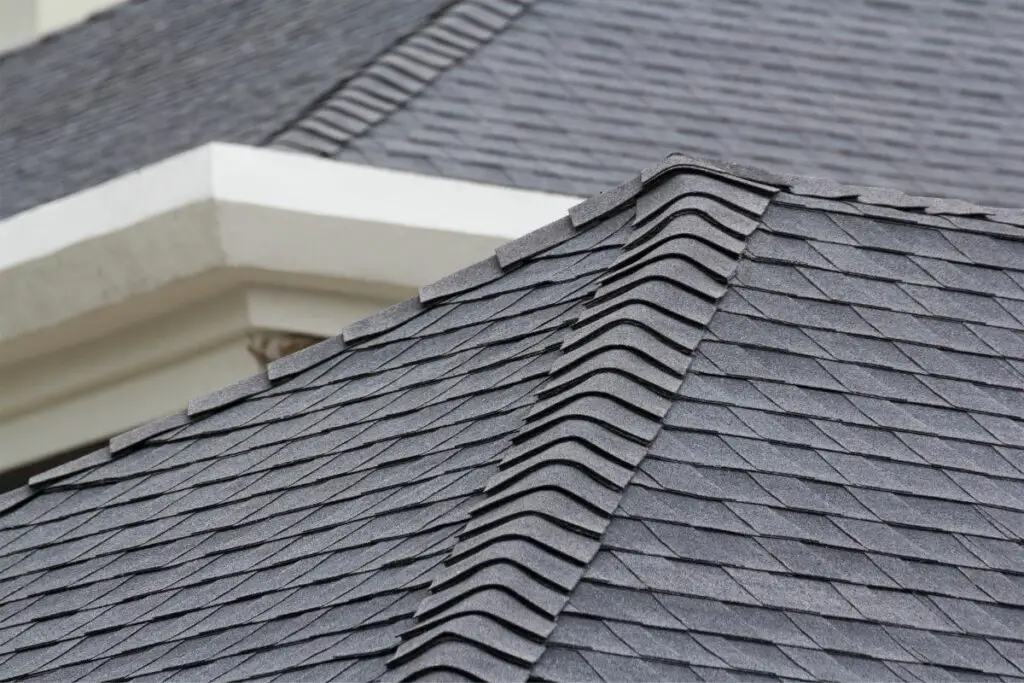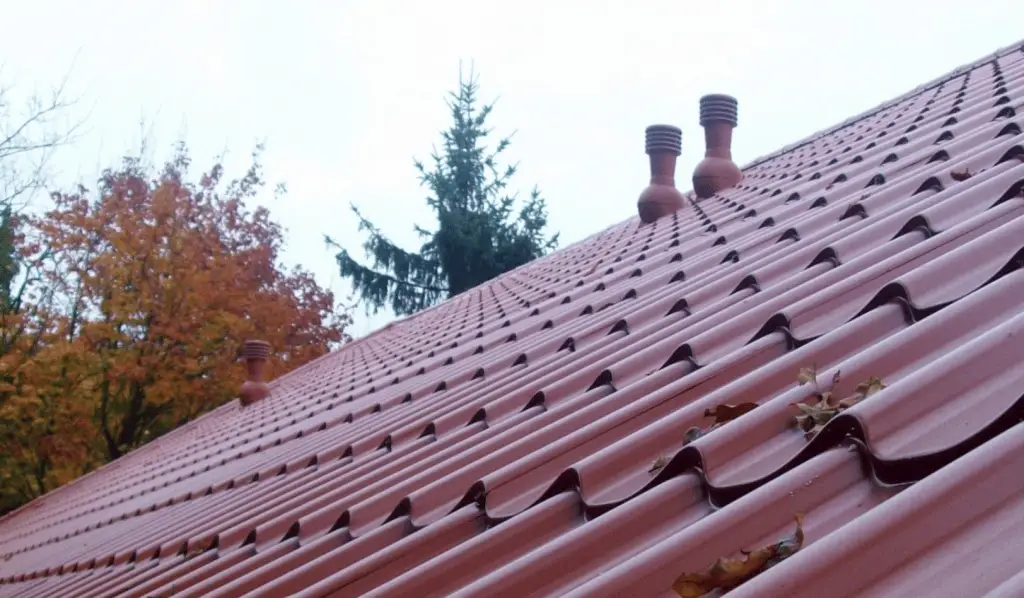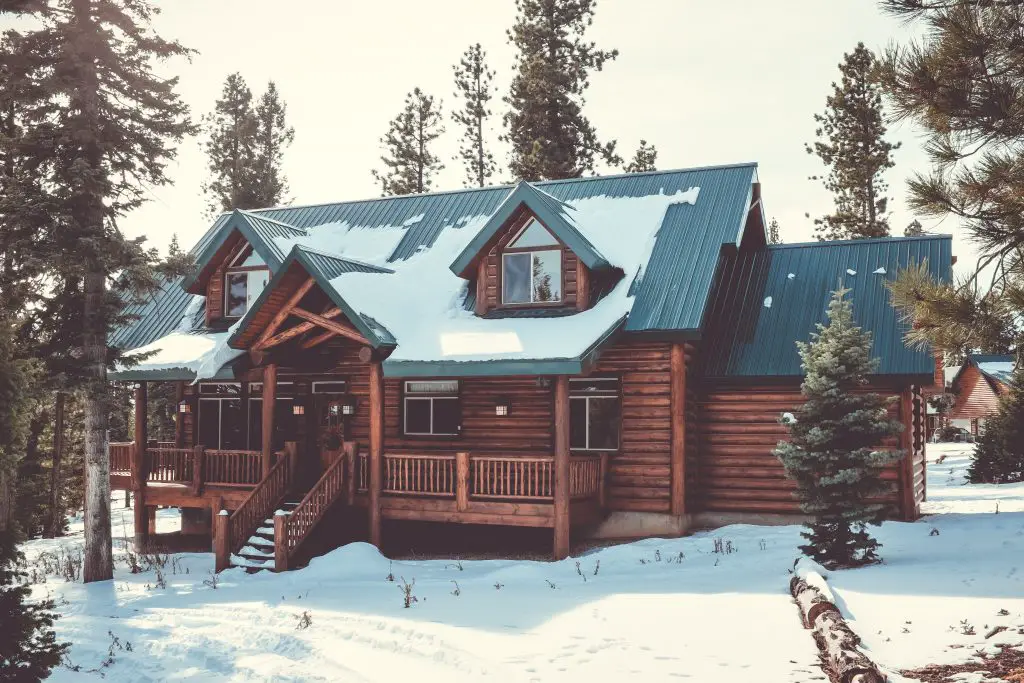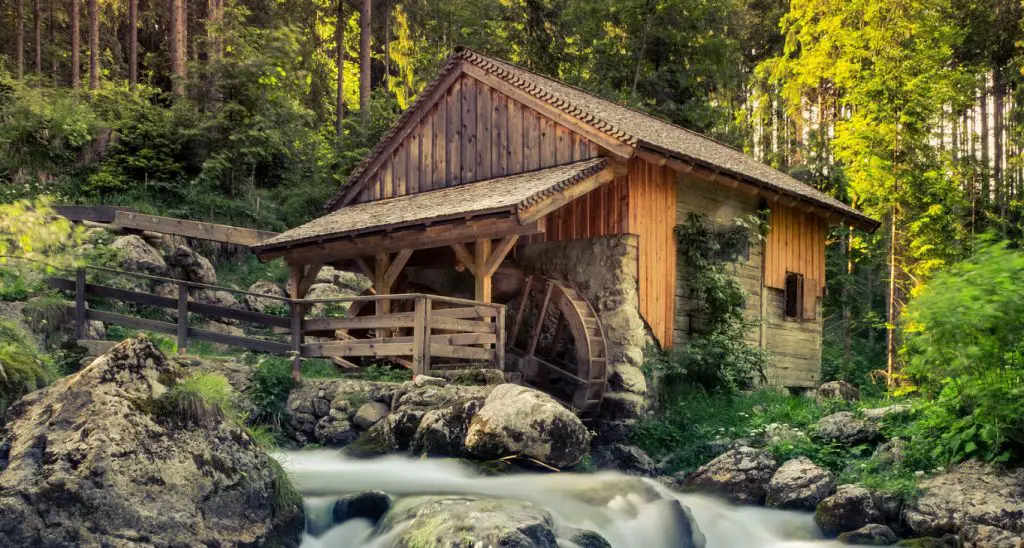We hope you love the products we recommend! Just so you know, when you buy through links on our site, we may earn an affiliate commission. This adds no cost to our readers, for more information read our earnings disclosure.
Last Updated on August 5, 2022 by Todd
Have you ever wondered what roof shingles are made of? Do you know what type of covering is on your roof, and how long it is likely to last?
We take a look at roofing shingles, what they are, what goes into them and how they attach to your roof.
Quick Navigation
What Are Roof Shingles?
Roof shingles are a type of covering that are most often rectangular in shape and flat.
They are laid individually in rows with each row overlapping the row below. The term shingle comes from the German word ‘schindel’ which means a roof slate.
Each shingle is fixed slightly offset from its neighbor. The first row is called the starter row and the shingles are fixed in subsequent rows moving up the roof.
The last row is called the ridge course and is often covered with a ridge cap which may incorporate a vent material.
Shingles can be made from different materials.
How Many Types Of Roof Shingle Are There?
The most common shingle material in the US is asphalt, but there are other types of shingle or roofing tile (see also ‘Can You Paint Tile Roof?‘)
.
Wood shingles come in two basic forms, shingles and shakes. Shakes are typically thicker and longer than shingles and more textured. This is because they are split along the natural grain of the wood.
These roof coverings must be pressure treated with a fire retardant to make them safe and untreated wood shingles are banned in some places.
Slate shingles are long lasting but are more expensive than most other shingles. An artificial alternative is the Eternit slate which is actually made of fiberglass. Metal plastic and cement shingles are also available.
Asphalt Shingles
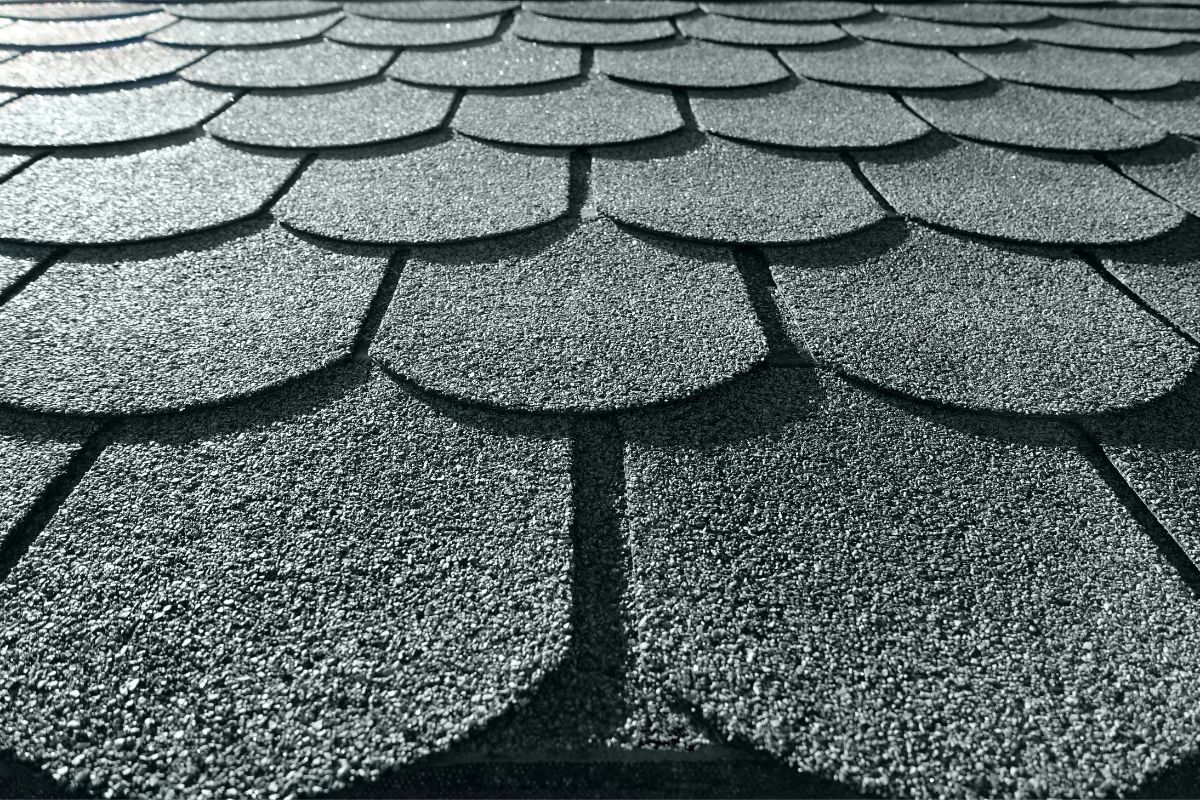
As the most commonly used shingle in the United States the asphalt shingle is readily available, easy to install and quite inexpensive.
They can last anywhere from 20-60 years so will need to be replaced quite frequently to maintain the integrity of your roof.
But do you know what asphalt shingles are made from? Most people are surprised to learn that they only contain between 5%-35% asphalt. So what else goes into the making of this popular roof material?
The process involves fiberglass, asphalt, granules, sealant and a release film. Not sure what all those things are? Let us explain.
Fiberglass
Fiberglass is made from extremely thin fibers of glass and is most often used as a reinforcing material. In the case of asphalt shingles the fiberglass offers a continuous sheet of webbing that the asphalt and other materials can be applied to.
The fiberglass is bound together with binders and stable resins to form a thin mat. This is what will hold the other elements together and form the roof shingle.
To make the roof shingles, rolls of fiberglass are unwound at the beginning of the process to allow the asphalt to be applied to the top and bottom of the sheet.
Asphalt
Asphalt is a byproduct of oil refining and has many applications in construction including as a road surface. The asphalt that is used in roofing shingles however has to be oxidized to make it more viscous.
This process involves blowing air through the hot asphalt, but this has to be done carefully. If too much air is applied to the shingle it can become brittle, too little, and it will be too soft and prone to scuffing in hot weather.
A fine mineral powder is added to the asphalt which acts as a fire retardant and also increases the weather resistance of the roof shingle. This asphalt coating is then added to the fiberglass sheet.
Granules
A fine grade of crushed rock which meets specific granular size specifications is applied to the asphalt shingle. The underside of the shingle which is not on view is normally covered in the granules in their natural stone colored state.
The granules on top are treated through ceramic firing to achieve various colors. This process ensures that the colors are long lasting as they are on the exposed face of the roofing shingle (see also ‘Can You Paint Roof Shingles?‘).
Some shingles are treated with an algae resistant coating to try and prevent blue-green algae growth and inhibit discoloration.
Other ‘reflective’ granules can help to reflect part of the sun’s heat as it hits the roofing shingle and are required by code in some areas.
Sealant
To bond the shingles together on the roof a thermally activated sealant is applied to them. Some shingles have this sealant on the bottom and some on the top.
For multi layer shingles a product called laminant is used to stick the layers together during manufacturing.
Both the sealant and the laminant are designed to activate within certain desired temperature ranges and to maintain their bond through the installation process and in times of high roof stress.
Release Film
Release film is a thin plastic tape that is attached to the back of the shingles for a very specific purpose.
This is designed to stop the shingles sticking together via the thermally activated sealant when they are stored in packs outside in the sun or in a hot warehouse.
Previously, some amateur installers thought it was necessary to remove this film in order to expose the sealant needed to stick the shingles together, but this is not the case.
Once installed the release film serves no purpose and remains on the back of the shingle.
How Are Roof Shingles Attached?
Asphalt shingles can be attached to the roof with four nails, one at each corner. But in areas subject to high winds, six nails should be used. Galvanized steel or corrosion resistant nails should be used to prevent them rusting.
The nails are fixed just below the nailing line where the sealant is to ensure the shingles adhere to the next row.
Final Thoughts
We hope this guide to what roof shingles are made of has been of some help to you, and that you now know a bit more about the shingles on your roof.

